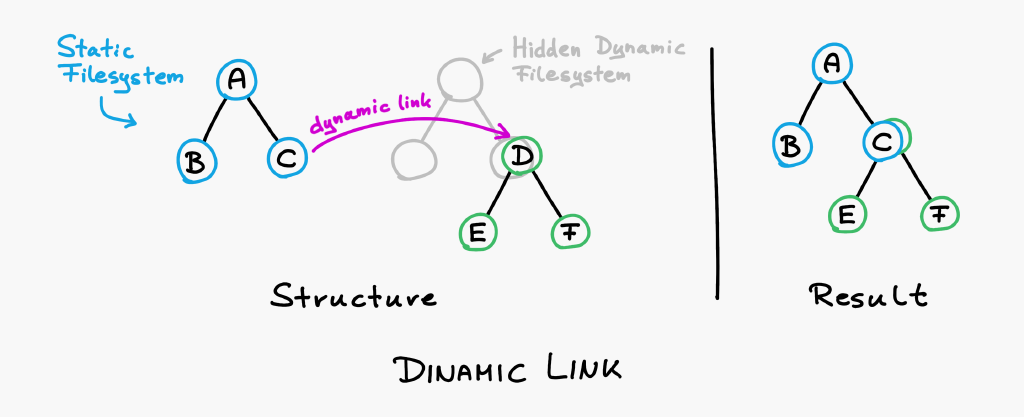dynamic link

A dynamic link mounts a dynamic volume that is stored on the hidden Dynamic Filesystem.
The purpose of the dynamic volume link is to allow attaching dynamic volumes that are writable during user and visitor visits. It is explicitly designed to store collaborative data.
Properties
Transparent. The linking file's type, body, attributes etc. are read from and written to the dynamic volume's root file.
No new filesystem scope. File types and other references inside dynamic volumes work just like outside it.
Dynamic link. Changing the dynamic volume does not cause hash change propagation on the linking file's filesystem.
Operations
Creating a dynamic volume is done by setting a file's link property to dynamic. The corresponding volume on the Dynamic Filesystem is automatically created.
Moving the linking file will keep the dynamic volume correctly attached, even if moved across volumes, branches or websites groups.
Copying the linking file will create a deep-copy of the dynamic volume. Editing either of the resulting volumes will not affect the other. Dynamic volumes can be copied across volumes, branches or website groups.
Deleting the dynamic volume will delete the corresponding volume from the Dynamic Filesystem.
Security
Dynamic volumes are considered to be unsupervised, collaborative storage. For security reasons, files stored on dynamic volumes can not be executed.
What does it mean? Say, you want to store an image on a dynamics volume. The image file's type would reference an app that is either a built in app (which can be executed) or one you have written yourself. In the latter case, the app you have written must be stored outside the dynamic volume.
Examples
dynamic
Attaches a dynamic volume that visitors can not access via URLs.dynamic --serveAttaches a dynamic volume that visitors can access via URLs.
Parameters
--serve
The --serve parameter allows serving HTTPS requests that originate in paths within the dynamic volume. By default it is disabled for security reasons.
Use case
A comments app would store comments within a dynamic volume. If you have comments in multiple places on your website, it is expected that each of them will have their own dynamic volumes.
Depending on the configuration of the website, comments may be open to all visitors or restricted to registered users only.